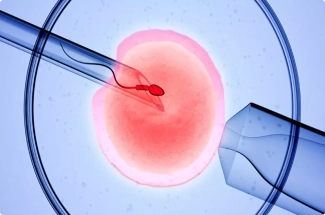Surrogacy Process

If a woman cannot bear and give birth to a child, there is an alternative way – surrogacy. In this case, a surrogate mother carries the baby and gives birth. At the same time, the process of surrogate motherhood includes the choice of the country where the procedure will be carried out, the signing the contract with the surrogate mother, the embryo transfer of and pregnancy monitoring, paperwork for the baby.

Medical Examination
Surrogacy is an alternative reproductive technology that helps women become mothers to their biological child. Indications for surrogacy include:
- Absence or deformity of the uterus.
- Severe systemic diseases (liver, kidney, heart).
- High risk of inheriting genetic disorders.
- Unsuccessful attempts at in vitro fertilization (IVF).
- Recurrent miscarriages.
In such cases, the services of a surrogate mother are sought, and specific requirements are set for the surrogate mother.
The surrogate mother must be between the ages of 18-35 and must have her own healthy baby born naturally. In the case of a cesarean section, the woman’s candidacy is rejected. The complete absence of bad habits – smoking, alcohol, drug addiction – is important. Before becoming a surrogate mother she must undergo a comprehensive medical examination, which will help to avoid complications in the process of gestation and childbirth. These examinations include:
- a thyroid-stimulating hormone (TSH) test, which help to check the thyroid gland function and identify or refute hypothyroidism or thyrotoxicosis;
- a blood test for TORCH-infection, allowing to detect rubella, toxoplasmosis, cytomegalovirus, herpes;
- a study on the blood group and its Rh-factor (Rh-factor must be positive);
- a blood test for syphilis (Wasserman reaction), HIV, hepatitis B and C;
- ultrasound of the pelvic organs and endometrium;
- examination of the cytology of the cervix to detect precancerous and cancerous conditions of the organ;
- Fluorography and ECG.
In addition, a candidate for a surrogate mother needs to undergo a consultation with a psychiatrist, get the results of an examination by a therapist about her general state of health.
Choice of the country
When choosing a country, it is important to consider that surrogacy is not allowed at the legislative level in all states. That’s why if you are going to apply for a service in another country, it is important to study the surrogacy law first. There is a complete ban on the procedure in Germany, Austria, France, Scandinavian countries (Sweden, Norway). Surrogacy is partially allowed (each country has its own nuances) in the Netherlands, Denmark, Canada, Israel, Great Britain, the Netherlands. The procedure is fully regulated by law in Ukraine, Georgia, Kazakhstan, and South Africa. However, it’s allowed in many states of North America (for example, Delaware, New Hampshire, Nevada, Colorado, Oregon, Connecticut).
In countries where surrogacy is allowed, there are also nuances in legislative aspects. For example, in the USA there are agencies headed by a doctor. The contract between the parties (the surrogate mother and the parents of the unborn child) is concluded in court. In other countries, laws protect the interests of biological parents in case of disputes. In Belgium, surrogate mothers and client parents regulate issues themselves since commodification (consideration as an object of purchase or sale) of the body is prohibited there.

Document preparation
The preparation of a package of documents depends on the chosen country and its legal framework. However, among the basic documentation, we can distinguish:
- The contract between parents and surrogate mother. It is stated information about payment for services and maintenance of the surrogate mother, the number of IVF procedures. It is indicated what to do in case of multiple pregnancy (if, for example, the spouses want to have only one child).
- Passport. It confirms the identity of the participants in the process, as well as the age of the surrogate mother. A surrogate mothers also provides a birth certificate of her own child.
- Medical documentation. It includes all the results of the surrogate mother’s examination. Moreover, some certificates, if necessary, need to be updated (for example, tests for HIV and syphilis are valid for 3 months, and fluorography – 1 year).
- Medical documentation of prospective parents. The couple provides certificates confirming their inability to conceive, carry, or give birth to a child on their own.
- Written consent of the parties. It is signed by the surrogate mother (she gives voluntary consent to medical intervention), biological parents (they agree to conduct the embryo transfer), clinic staff performing the procedure.
Depending on the peculiarities of the legislation of the chosen country, the list may be supplemented by other documents.

Choosing a surrogacy program
Many clinics provide a basic program that includes:
- Selection of surrogate mother. The surrogate mother’s health is carefully checked, she undergoes a psychological examination to determine her readiness to bear and give birth to a child for a couple.
- Providing legal services. Lawyers draw up a contract that states all the nuances of the cooperation between the surrogate mother and biological parents.
- Technical support. This includes monitoring visits to the doctors by the surrogate mother, proper nutrition during pregnancy. Separate clinics provide both a woman and parents with housing if they are from other cities.
Before contacting a reproductive clinic, it is important to check all licenses and certificates of a medical institution, if possible, talk with clients who have already contacted the chosen agency.

Visit to the country for the procedure
If a married couple has decided that the surrogacy procedure will be conducted in another country, then there will be at least two visits. At the first visit parents will give the biomaterial – eggs and sperm. During the second visit, the parents must take the newborn child home. However, according to the wishes of the parents, they can visit the chosen country as much as they want in order to personally control the surrogate mother during pregnancy, her lifestyle, diet, and, if possible, attend the birth.
Surrogate mother and egg donor selection
When considering potential candidates, the couple can not only ask for documents on the health status of the surrogate mother, but also provide their own requirements. For example, regarding education, religion, lifestyle. At the same time, it is important for a childless couple to remember that when transferring embryos, where their genetic material was used, the child will inherit the features of their appearance and character, and not of the surrogate mother.
However, if the woman cannot use her eggs, she can use donor eggs. In this case, it is important for future parents to conduct an in-depth study of the donor’s ethnicity, to find out the color of her eyes, hair, so that she would be as similar as possible to one of the parents. At the same time, a surrogate mother cannot become an egg donor.

Embryo transfer to
a surrogate mother
In medical practice, 2 types of transfer are used – fresh transfer and cryotransfer.
- Fresh transfer – Embryos are transferred to the surrogate mother’s uterine cavity during the cycle, when ovarian stimulation, egg retrieval, fertilization and embryo cultivation are performed. Clinical pregnancy occurs in 41% of cases.
- Cryotransfer – Embryos are instantly frozen in liquid nitrogen at -196 degrees Celsius, which preserves 99% of the viability of the embryos. If necessary, these embryos are thawed and transferred into the uterine cavity. Pregnancy occurs in 56% of cases.
Process steps
After fertilization until the day of embryo transfer, the embryos consist of several cells. With a fresh transfer, the procedure is performed 48-120 hours after fertilization. Embryo transfer stages are as follows:
- Installing a vaginal speculum to examine the walls of the vagina and the uterine cavity.
- Processing of the vagina and external genitalia with a sterile solution.
- Filling the catheter (tube up to 2 mm in diameter) with the medium with embryos.
- Insertion of a catheter into the uterus under ultrasound control.
- Removing the catheter and checking that the embryo has entered the uterus.
After 12 days, a blood test is carried out to confirm pregnancy.

Pregnancy process
After the pregnancy is confirmed, the surrogate mother must regularly visit a doctor and take the necessary tests. The clinic for pregnancy management is chosen by the biological parents. They have the right to monitor the course of pregnancy step by step, providing the surrogate mother with money, vitamins, food, and clothes. Also, at the request of the parents, additional studies can be performed, for example, to determine the sex of the child, intrauterine diseases. The surrogate mother must lead a healthy lifestyle, walk a lot in the fresh air, and eat properly.

Visit for childbirth and
paperwork for the child
Childbirth takes place naturally, in rare cases, a cesarean section is performed. The process of surrogacy ends with the payment of the fee specified in the contract. The surrogate mother provides the waiver of the baby immediately after birth, then the cooperation ends. For paperwork of a baby the couple must provide an application, passports of the client parents, a certificate from the clinic where the birth took place, the consent of the surrogate mother, so that the biological parents are recorded as parents in the birth certificate, and a copy of the contract with the clinic conducting IVF.